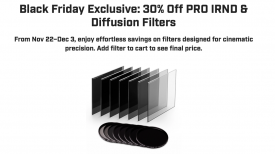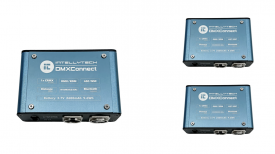By Andy Portch
No lights, no tripod and no mucking about. That’s how we continued our coverage of the growing Tibetan unrest in Western China.
Please be aware that our story ‘Nun self-immolation’ includes footage given to us of a protesting Tibetan nun setting herself on fire. The rest of the story is shot entirely with my Panasonic GH2 camera. In our other latest report from Aba town we shot the Chinese security crackdown using the GH2 with a couple of additional shots from an AVCHD camcorder. My correspondent is Holly Williams.
Last year we had been detained and turned back from reaching Aba town by Chinese police. This time to avoid detection we drove a mammoth 1500km through neighbouring provinces and across the massive Sichuan Mountains. We stayed in ‘safe’ guest houses and travelled mostly at night, experiencing heart-stopping near misses with yaks, sheep, prostrating pilgrims and police check points.
We are not on a mission against the Chinese regime. The remote Tibetan regions of Western China are not officially off-limits to journalists or foreigners. We applied for permission to visit, but our official requests were unanswered. In reality the region is under a colossal Chinese security clampdown. The Tibetans we did manage to speak to were scared and claimed a lack of religious and cultural freedom. It is dreadful that dozens of Tibetan monks, nuns and lay people are setting themselves on fire. The Chinese Foreign Ministry call our latest reporting ‘unnecessary’.
We arrived in Aba town before dawn and immediately experienced a problem I’ve never known before. The inside of the car windows had iced up. As the sun rose the ice turned to condensation and fogged our windows. It was a stomach churning episode as we sat with massed Chinese security outside our car, with the fogged up windows preventing me from shooting anything. Fortunately I found a Zacuto anti-fog wipe in my bag and cleared enough of the window to get some footage before we had to leave.
Sky News is an HD station shooting Panasonic P2 HD, but to get these stories they accepted my GH2 recording AVCHD internally in interlaced format at 17mbps. (Currently a lot of broadcasters do not like progressive shooting, even at the higher bit rate.)
Aba town was shot almost completely from inside our car. We had little time on the ground and limited access to our subjects. On both trips I had four lenses with me. It should have been three, but the Lumix 14-140mm came along for the ride. My main lenses were the Voigtlander Nokton 25mm F0.95, Leica 14-50mm F2.8-F3.5 4/3rds lens with adapter and SLR magic 12mm F1.6. (Note: The Micro Four thirds GH2 has a crop factor of almost two compared to full frame 35mm cameras).
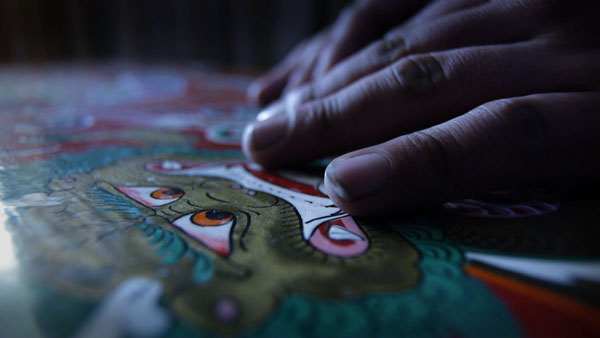
I wish all my lenses were made by Voigtlander. The Nokton 25mm gets my stories noticed. The Leica 14-50mm shares an organic quality and I like the medium zoom range, image stabilizing and faster speed. I don’t like the jumpy manual focusing with Leica’s electronic focus ring. I have retired this Leica lens many times, but keep coming back to it. The Lumix 14-140mm I find hard to manual focus and the image clinical by comparison. It should have stayed at home, but I wasn’t sure how far away I’d be from my subject. The SLR Magic 12mm F1.6 is a mixed bag. It does flare wide open, but I rarely use it below F2. It has an appealing image softness which works well. It is relatively heavy and annoyingly the mount sticks with my GH2 and AF101. The factory de-clicked aperture ring is a bonus, but aperture and focus ring grease stiffens below freezing. What the 12mm does beautifully for me is near focus work. (If you use Nikon lenses you’ll be happier because it focuses the same way.)
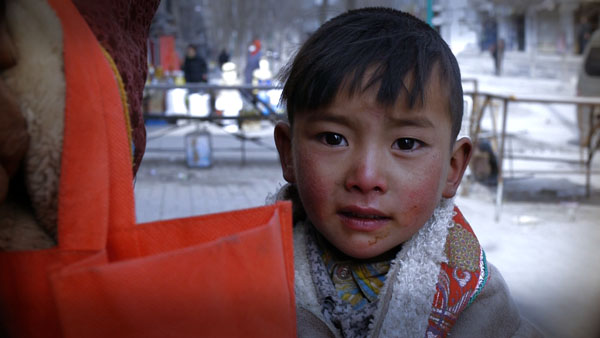
I am eagerly awaiting the new Lumix X series 12-35mm and 35-100mm lenses which Panasonic have shown as prototypes. I wish there was a third mid fast zoom (12-60mm), which is a better workhorse focal length for news. A common problem is being caught with a lens on the camera that is too long or too wide. I know snappers are rolling their eyes saying “use two camera bodies”. Let’s hope the new Lumix X lenses have decent manual focus rings with end stops.
I use ND8 filters when I am shooting outdoors. A three stop reduction I find is the minimum in daylight to shoot anything. I do wonder why camera electronics and sensors can’t use tiny ISO to help out here. I haven’t got Variable ND filters for each lens and anyway find them fiddly. With my old Canon 5D mkII the Variable ND softness was a benefit reducing moiré and aliasing – not an issue with the GH2. Make no mistake; changing lenses and neutral density filters is the biggest challenge of shooting DSLR for news and doco.
I did not take a tripod for either Tibetan story. We had to appear low key. Some shots are fine handheld, but key establishers must be stable. A Gorillapod Focus rolled up in my bag was quickly and discreetly deployed. I found the Gorillapod too lightweight for my 5D, but the perfect GH2 companion. I’ve also adopted the Gorillapod as my handheld rig. Hand holding the small sized GH2 on its own gave bumpy results, but when I braced the gorillapod legs together in any fashion against my shoulder or chest, smoothness returned. Beware: Gorillapod leg joints become looser in cold weather.
Taking no lamps meant the impromptu indoor interview at night for the first story was a challenge. I relied on minimum practical room lighting and a bedside lamp on an extension cable. I used the Nokton 25mm handheld, but with high ISO of 1250.
The GH2 does a good job recording atmospheric sound. You need to avoid heavy breathing as you hold the camera close to your face or crouch over it. For interviews I use a simple external recorder and lavaliere microphone. I have an Olympus LS-11 unit that can record for eleven hours. Audio syncing is no longer a headache with software like Pluraleyes. If carrying extra gear is not an issue then hooking up my old Audio Ltd radio mic setup gives me headphone monitoring of the signal going into the camera (but not what is actually being recorded).
The BCU interview in Aba town looks good with my Leica 14-50mm set at 50mm wide open. When we met our interviewee he sobbed almost immediately. We moved swiftly to a safe location to record the interview. I thought if tears rolled down his cheeks this shot was going to be very moving. In true Tibetan style our interviewee managed to hold his emotions together during our interview and the tear shot didn’t happen.
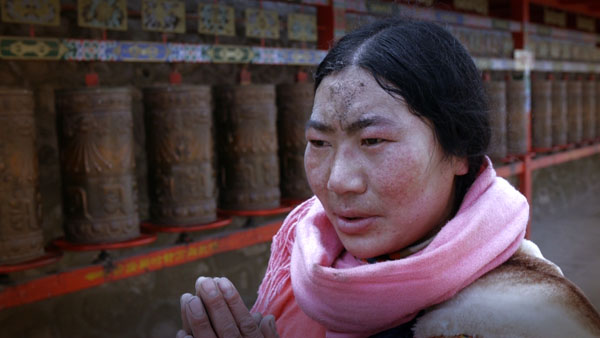
We didn’t hang about in Aba town and began the long journey back through the checkpoints. In daylight we weren’t so lucky with our escape. In three towns we were detained and roughed up by the security forces. I had my camera taken, laptop searched and all files deleted from the audio recorder. The Chinese security was extremely angry at our presence. At one checkpoint I had two paramilitary ‘People’s Armed Police’ officers holding me down as they took away our laptop.
At the final checkpoint, police, paramilitary and plain clothes security thugs threatened our driver. He was terrified; we couldn’t leave him so far from his home province. Our only option was a crazy journey in a beaten up VW saloon across a mountain range in gathering darkness. We were pursued by plain clothes security in a four wheel drive with its number plates covered. I confess to being very scared; anything could have happened to us and no-one would have known. The snow was thicker than we could manage, but there was nowhere to turn back to. We crested the mountains and descended a 100km section at walking pace on a single track road. In the gloom the towering gorge around us resembled a Christmas card from hell. We were followed by the plain clothes cops through the night to the provincial border. Next day we drove out to Xi’an and our driver back to his home province.
These stories from the Tibetan region of China are disturbing. We included the footage of the burning nun after much thought. I spent a late night grimly blurring every frame to make it more bearable to watch and broadcast. Whilst doing this I glanced up to see a mysterious apparition glide through our office. Taken aback I scuttled home. (Our news editors later made the decision to cut the self immolation footage from the final broadcast).
The edits were straightforward. The AVCHD footage was converted to Apple Prores LT on ingest to Final Cut Pro 7. Grading was done with Magic Bullet Looks and Nattress Film Effects.
The DSLR revolution has not opened mainstream programme making to the masses. I’m not sure it ever will. Programme making is a craft and skill like any other.
The DSLR is a camera that gives a lot of bang for your buck and combined with ease of video hosting thanks to sites like Vimeo it gives opportunity for creative filmmakers to promote their work. For cinema work the breakthrough is the low price not the visual difference.
But for me, the DSLR is simply the latest tool; a good one that brings the visual creativity of photography to the video world. Compared to small sensor video it is a massive shift.
I’ve watched all the newer large sensor cameras coming out lately. I don’t want to pop the C300 bubble; it is the latest hybrid large sensor camera, but plenty of quality options are out there and more coming. The question is, can your project see the difference between C300 and other DSLR video? Is the difference worth the money? If the quality difference matters then maybe a better camera exists. In other words the C300 fits a niche, but it is not the ultimate solution.
I admit to a contradiction in my work. I shot the recent Japan earthquake/tsunami anniversary with a regular broadcast P2HD camera. For ’live’ and ‘one off’ events it gives zero chance of missing a shot – aside from operator error! I can confidently, creatively and quickly shoot news sequences impossible with my current DSLR set up.
The DSLR video honeymoon is over. The attraction of the ‘medium’ with shallow depth is inevitably becoming a bit samey. Don’t be a slave to shallow depth and don’t be afraid of deep focus just because you’ve got a fast lens. Composition is crucial no matter what camera you use. That said, I missed the GH2 in Japan and the signature compelling images that I can get from taking risks with large sensor video.
Andy Portch is a senior cameraman for Sky News based in Beijing.
Reports shot by Andy for Sky News have won multiple Royal Television Society and Foreign Press Association awards as well as the Monte Carlo Golden Nymph Award.





